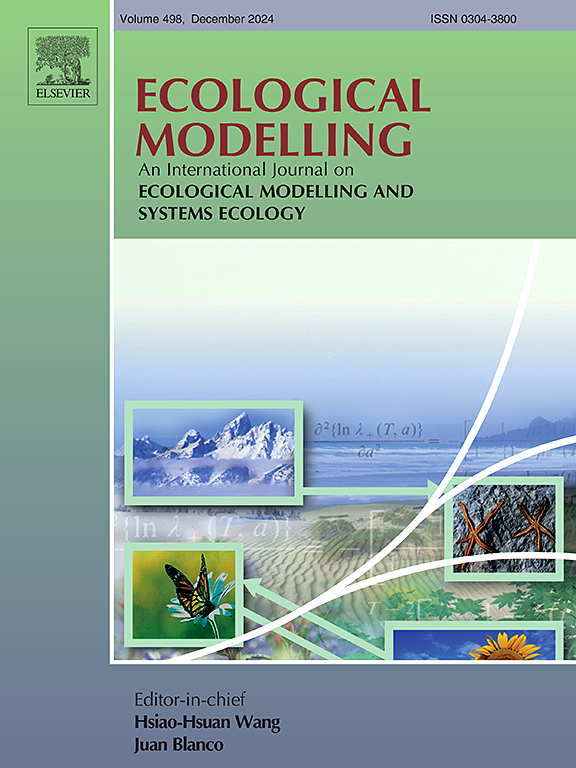Elasticity analysis of population growth: Implications of matrix model construction
IF 3.2
3区 环境科学与生态学
Q2 ECOLOGY
引用次数: 0
Abstract
Elasticity analysis can help ecologists and population managers to rank demographic processes based on their relative contributions to population growth. Here, numerous studies are reviewed where results of elasticity analysis that appear to be specific to the analyzed data can, to some extent, be anticipated on the basis of how the population projection matrix (PPM) was constructed in these studies, independently, or largely so, of the parametrization of this matrix with data. Focus is on the elasticities of population growth at demographic equilibrium to the entries of a time-independent population projection matrix. An essential component in the construction of a PPM is establishing its pattern, here defined as the location of nonnegative entries of the matrix and their demographic meaning. Studies using age-classified models are reviewed separately from studies using stage-classified models. While reviewing both types of studies, several interrelated rules are recalled that can help derive a ranking of elasticities, either from the pattern of the PPM alone or in combination with very little demographic data. It is suggested that greater awareness of the existence of these rules can be beneficial for practitioners of elasticity analysis: some desired results of this analysis can at times be predicted a priori or without full parametrization of the PPM; moreover, the rules can contribute to informing decisions based on the results of elasticity analysis.
人口增长的弹性分析:矩阵模型构建的意义
弹性分析可以帮助生态学家和人口管理人员根据其对人口增长的相对贡献对人口统计过程进行排名。这里回顾了许多研究,在这些研究中,弹性分析的结果似乎是特定于分析数据的,在某种程度上,可以根据这些研究中如何构建人口预测矩阵(PPM)来预测,独立地,或很大程度上,与数据矩阵的参数化有关。重点是人口均衡时人口增长对时间无关的人口预测矩阵入口的弹性。构建PPM的一个重要组成部分是建立其模式,这里定义为矩阵的非负条目的位置及其人口统计意义。使用年龄分类模型的研究与使用阶段分类模型的研究分开进行综述。在审查这两种类型的研究时,回顾了一些相互关联的规则,这些规则可以帮助从单独的PPM模式或结合很少的人口统计数据得出弹性的排名。有人建议,对这些规则的存在有更多的认识对弹性分析的实践者是有益的:这种分析的一些预期结果有时可以先验地预测或没有PPM的完全参数化;此外,这些规则还有助于根据弹性分析的结果做出决策。
本文章由计算机程序翻译,如有差异,请以英文原文为准。
求助全文
约1分钟内获得全文
求助全文
来源期刊

Ecological Modelling
环境科学-生态学
CiteScore
5.60
自引率
6.50%
发文量
259
审稿时长
69 days
期刊介绍:
The journal is concerned with the use of mathematical models and systems analysis for the description of ecological processes and for the sustainable management of resources. Human activity and well-being are dependent on and integrated with the functioning of ecosystems and the services they provide. We aim to understand these basic ecosystem functions using mathematical and conceptual modelling, systems analysis, thermodynamics, computer simulations, and ecological theory. This leads to a preference for process-based models embedded in theory with explicit causative agents as opposed to strictly statistical or correlative descriptions. These modelling methods can be applied to a wide spectrum of issues ranging from basic ecology to human ecology to socio-ecological systems. The journal welcomes research articles, short communications, review articles, letters to the editor, book reviews, and other communications. The journal also supports the activities of the [International Society of Ecological Modelling (ISEM)](http://www.isemna.org/).
 求助内容:
求助内容: 应助结果提醒方式:
应助结果提醒方式:


